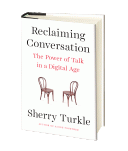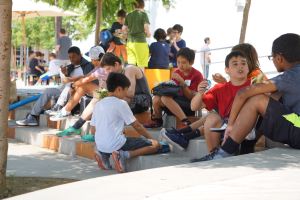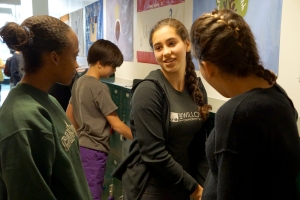Five years ago after moving from teaching the first/second grade loop to teaching upper elementary students, I noticed that there was a need for a more consistent writing curriculum across the grades at our school. Of course teachers gave writing assignments, but a continuity in how writing was being taught needed to be reviewed and updated.
In search of more comprehensive writing instruction, I found The Reading and Writing Project at Teachers College, Columbia University. I was familiar with Lucy Calkins and her writing workshop curriculum, but I wanted to learn more. After attending their Summer Writing Institute on their campus at Columbia University, I returned to The Willows inspired and invigorated to share what I learned with my colleagues. Since then, we’ve created an exceptionally strong writing curriculum, guided by Writing Workshop.
The Writing Workshop Model is very Willows in that it is student-centered, but also provides structure and clear goals.
These are the Writing Workshop Essentials, from Lucy Calkins’s book, Guide to the Writing Workshop, and how we have implemented them at The Willows:
- “Writing needs to be taught like any other basic skill, with explicit instruction and ample opportunity for practice.”
I found that we weren’t scheduling writing into our regular weekly lessons. We’d give students creative writing assignments during the year, but the craft of writing wasn’t being explicitly taught everyday. We’d justify this by reasoning that our students were doing lots of writing in other subjects. Imagine if we did that with math— “Oh, we don’t have a regular math time, but students do math in science and social studies without even realizing it, so that’s okay.”
The first and most important change we made was to make writing a priority and to put it on the weekly schedule, just like math, reading, social studies, and science.
- “Children deserve to write for a real purpose, to write the kinds of texts that they see in the world and to write for an audience of readers.”

A first grade “expert book”
In Writing Workshop there are three main types of writing we teach—narrative, informational, and persuasive. We teach each of these forms every year and build upon the skills from the year before, increasing the complexity and sophistication of the writing. At the end of each unit, we “publish” our books and share them with one another and our greater community.
- “Writers write to put meaning onto the page. Children invest themselves in their writing when they choose topics that are important to them.”
We teach children strategies to find topics they are passionate about, rather than assign them a topic. We teach them that the purpose of writing is to communicate your ideas. We write because we have something to say, and we often discover what we have to say through our writing. This has been so empowering. Our students love writing workshop because of this.
- “Children deserve to be explicitly taught how to write.”

A third grade “expert book”
In the younger grades, we teach informational writing units in which students write “expert books.”. Each student chose a topic that they feel they are experts in and do not need to research (being an older sister, football, playing with sticks). We then explicitly teach them how to write an informational piece well, organizing and focusing their topics, writing paragraphs, using lots of examples, synthesizing their ideas, and using vivid, descriptive language. Later, we combine our informational writing unit with a social studies or science unit, and introduce the element of research into their process.
- “Children deserve the opportunity and instruction to cycle through the writing process.”
By explicitly separating writing into stages, we’re demystifying the writing process and giving students the expectation that they will create several drafts when they write.
The biggest change I’ve seen has been to differentiate revision from editing. Many teachers lump these together, and end up giving revision short shrift. We talk about revision as the big stuff—does the writing make sense?, is there enough description so readers can picture this in their minds?, what is the writing really about?, is my message—what I have to say—really coming through? Editing is fixing the conventions (spelling, punctuation, grammar) so the work can be read easily. This comes after revision.

My students now enjoy revision. Their papers get messy, and the more revisions they make, the messier the draft gets. I revise my own writing in front of them, then invite them to do it to their work.
- “To write well, children need opportunities to read and to hear texts read, and to read as writers.”
We use mentor texts by master authors that we examine to see what techniques the writers use to communicate their ideas, so we can try using them as well. Now, during book clubs or read aloud, students are noticing devices writers’ use that they can incorporate in their own writing, like flashbacks or foreshadowing.
- “Children need clear goals and frequent feedback.”
This happens mainly during writing conferences. Before writing workshop, my writing conferences took place at my desk, after a student had finished a draft. I’d hold a pen and write on the student’s paper, showing them where to add a detail or to re-order some sentences. The student would often stare into space, and I’d mark up the paper and give it back so they could make my corrections. I’d have a long line of students snaking around the room waiting for my help and my approval.
Now, I rarely sit at my desk during writing times. I move around the room and check in with students at their tables. I talk to them and give them feedback in whatever stage they’re working in. I don’t write on their papers. I might write some notes on a separate paper so they can remember what we talked about, but the students have to make their own revisions, do their own writing.
We use checklists and charts so students can remind themselves of their goals. Students don’t stand in line and wait for a conference with a teacher. They keep working and use the tools we provide to help themselves until the next teacher check-in.
Teaching writing like this takes more work, but we are now sending students to each higher grade with more skills, ready to take on a new level of sophistication in their writing. It’s been so gratifying to see how our students have embraced this process. Students are excited about writing, disappointed when their writing time is over, sometimes asking if they can stay inside during recess to keep working on a story. As a teacher it doesn’t get better than that.






 arration, and the student’s artistic talents to create a lesson so clear and concise, I am fairly sure I’ll be using her lesson in addition to mine in the future. Another student used editing techniques and music to create a feeling of momentum and excitement as she built toward her thesis in a
arration, and the student’s artistic talents to create a lesson so clear and concise, I am fairly sure I’ll be using her lesson in addition to mine in the future. Another student used editing techniques and music to create a feeling of momentum and excitement as she built toward her thesis in a 



 and
and 
 Balance is a word you hear often around The Willows. We are a balanced, progressive school. Tradition is balanced with innovation. Academics, the arts, athletics, and social emotional development are balanced in our educational program.
Balance is a word you hear often around The Willows. We are a balanced, progressive school. Tradition is balanced with innovation. Academics, the arts, athletics, and social emotional development are balanced in our educational program. Questioning, deep critical thinking, and creative inquiry, and sharing this as a group, is accentuated in all our classrooms. Walk through our hallways and glance in any classroom and you will see that conversation is thriving and technology is integrated effectively and appropriately.
Questioning, deep critical thinking, and creative inquiry, and sharing this as a group, is accentuated in all our classrooms. Walk through our hallways and glance in any classroom and you will see that conversation is thriving and technology is integrated effectively and appropriately.